
32
Tạp chí Khoa học Đại học Đông Á, Tập 4, Số 01(13), Tháng 3.2025, tr. 32-49
©Trường Đại học Đông Á, Đà Nẵng, Việt Nam ISSN: 2815 - 5807
Y học cổ truyền được Nhà nước thúc đẩy
như một biểu tượng quốc gia:
Trường hợp Indonesia và Việt Nam những năm 1950
Mai Thị Mỹ Vịa*, Frank Dhontb
Tóm tắt:
Trong những năm 1950, các quốc gia mới giành độc lập ở Đông Nam Á, bao gồm Việt Nam
và Indonesia, phải đối mặt với tình trạng khủng hoảng y tế nghiêm trọng do những khó khăn
trong việc xây dựng hệ thống chăm sóc sức khỏe hiện đại cũng như sự bãi bỏ hệ thống y tế
thuộc địa. Trong bối cảnh đó, y học cổ truyền dần chuyển đổi từ một phương pháp điều trị bị
xem nhẹ dưới thời thuộc địa thành một công cụ hậu thuộc địa có vai trò tích cực trong việc duy
trì và cải thiện sức khỏe cộng đồng. Sau khi giành độc lập, Việt Nam và Indonesia đối diện với
tình trạng thiếu hụt nghiêm trọng nguồn lực y tế và đã tích cực thúc đẩy các phương pháp điều
trị bằng y học cổ truyền như một giải pháp thay thế trong nước.
Tại Indonesia, jamu, một phần của y học cổ truyền bản địa, đã phát triển thành một biểu tượng
quan trọng thể hiện bản sắc dân tộc. Một trong những nguyên nhân chính là jamu có mối liên
kết chặt chẽ với các truyền thống văn hóa của Indonesia. Trong khi đó, y học cổ truyền Việt
Nam từng bị chính quyền thuộc địa Pháp coi là lạc hậu và tìm cách loại bỏ trong suốt nhiều
năm. Tuy nhiên, Chính phủ Việt Nam Dân chủ Cộng hòa đã triển khai chiến lược khôi phục
y học cổ truyền nhằm giải quyết tình trạng thiếu hụt vật tư y tế. Từ những năm 1950, các nhà
hoạch định chính sách y tế đã sử dụng y học cổ truyền như một phần trong chiến lược xây
dựng quốc gia. Bài viết này phân tích các phương thức mà Việt Nam và Indonesia đã áp dụng
để thúc đẩy sự phát triển của y học cổ truyền và xây dựng biểu tượng quốc gia trong thời kỳ
hậu thuộc địa. Đồng thời, bài viết cũng chỉ ra những điểm tương đồng và khác biệt trong chiến
lược kiến tạo quốc gia của hai nước dựa trên y học cổ truyền.
Từ khóa: xây dựng biểu tượng quốc gia, y học cổ truyền, Indonesia, Việt Nam, chiến lược y tế
a Khoa Lịch sử, Đại học Quốc lập Thành Công; 01 Đại học, quận Đông, Đài Nam, Trung Hoa Dân quốc.
e-mail: maimyvi85@gmail.com
b Khoa Lịch sử, Đại học Quốc lập Thành Công; 01 Đại học, quận Đông, Đài Nam, Trung Hoa Dân quốc.
e-mail: frank.dhont@gmail.com
* Tác giả chịu trách nhiệm chính.

33
ISSN: 2815 - 5807 Dong A University Journal of Science, Vol. 4, No. 01(13), March 2025, pp. 32-49
©Dong A University, Danang City, Vietnam
Abstract:
In the 1950s, several newly independent nations in Southeast Asia, including Vietnam and
Indonesia, faced severe health conditions due to the difficulties of developing their modern
national healthcare systems and the abolition of the colonial medical system. During this time,
traditional medicine began to transform from being looked down on as a healthcare practice
to a post-colonial tool actively supporting the goal of maintaining and improving population
health. After gaining their independence, Vietnam and Indonesia faced a shortage of medical
resources and worked to promote traditional treatments in their respective countries.
In Indonesian, the jamu, considered a part of traditional Indonesian medicine, has developed
into an important national identifying symbol. One of the big reasons for this is because of its
accepted link to Indonesian ‘traditions.’ In the case of Vietnam, Vietnamese traditional medicine
was commonly seen as outdated after years of French colonial government efforts to eradicate
it. However, the country’s national government launched a campaign to reintroduce it to
address the lack of medical supplies. In the 1950s, the people in charge of the health sector
used traditional medicine to begin the effort to construct nation-building strategies. In this
paper, we will examine the techniques used by these two countries to support the growth of
traditional medicine and create these national symbols in the post-colonial period. The paper
also highlights the parallels and variations in Vietnam’s and Indonesia’s national construction
strategies based on traditional medicine.
Keywords: National symbol building, traditional medicine, Indonesia, Vietnam, health care strategy
Received: 21.2.2025; Accepted: 15.3.2025; Published: 31.3.2025
DOI: 10.59907/daujs.4.1.2025.419
Traditional Medicine as a Government-Fostered National
Symbol: Indonesia and Vietnam in the 1950s.
Mai Thi My Via*, Frank Dhontb
a Department of History, National Cheng Kung University; No. 1, Dasyue Rd, East District, Tainan City,
ROC. e-mail: maimyvi85@gmail.com
b Department of History, National Cheng Kung University; No. 1, Dasyue Rd, East District, Tainan City,
ROC. e-mail: frank.dhont@gmail.com
* Corresponding author.

34
Introduction
Traditional medicine has played a crucial role in the healthcare systems of Southeast
Asian countries, particularly Indonesia and Vietnam. However, its status and legitimacy
have been significantly challenged throughout modern history, particularly during the
colonial period. In the late 19th and early 20th centuries, colonial administrations introduced
Western medicine, which led to the restriction and, in some cases, the prohibition of
indigenous healing practices (Pols, 2010). Traditional medicine was often dismissed as
unscientific and superstitious, while Western medicine was promoted as a superior and
modern alternative (Pols, 2010). Despite these colonial-era efforts to marginalize traditional
medicine, both Indonesia and Vietnam have experienced a resurgence in traditional
healthcare practices, particularly in the post-colonial period, when governments actively
sought to integrate indigenous knowledge into national healthcare systems.
In Indonesia, traditional medicine, particularly jamu, was widely practiced for
centuries but was excluded from formal education and hospital settings as the medical
community aligned itself with modernity and evidence-based treatments (Afdhal & Welsch,
1988). After gaining independence, Indonesian doctors, many of whom were part of the
nationalist movement, continued to prioritize Western medicine as a symbol of progress.
However, economic constraints and the high cost of pharmaceutical drugs have led many
Indonesians, particularly those in rural areas, to continue relying on traditional herbal
remedies (Hung, 2020). The Indonesian government has since recognized the importance
of traditional medicine, particularly through initiatives to scientize jamu and integrate it
into national health strategies (Hung, 2020).
Similarly, in Vietnam, the French colonial government sought to suppress traditional
medicine in favor of Western medical practices, portraying indigenous medicine as
outdated and ineffective (Monnais, 2006). However, during the mid-20th century, traditional
medicine experienced a revival, as the Vietnamese government emphasized the integration
of traditional and contemporary medical practices (Wahlberg, 2006). In the 1950s, this
integration became a central part of national healthcare policies, reflecting broader efforts
to utilize indigenous knowledge in post-colonial state-building. Today, Vietnam continues
to incorporate traditional medicine into public health initiatives, recognizing its cultural
significance and accessibility, particularly in rural areas (Ministry of Health 2003).
This study examines the historical trajectory of traditional medicine in Indonesia and
Vietnam, focusing on how both countries have utilized traditional healing practices as
national symbols in the post-colonial era. It explores the strategies and policies employed
by each government to integrate traditional medicine into their healthcare systems and
national identity. By analyzing the similarities and differences in their approaches, this
research contributes to a broader understanding of how traditional medicine has been

35
redefined in Southeast Asia as both a practical healthcare solution and a tool for cultural
and political identity.
Subjects and Methods of Research
Subjects of Research
This study examines the role of traditional medicine as a constructed national symbol
in Indonesia and Vietnam during the 1950s. The research focuses on multiple key subjects,
including the historical context of post-colonial healthcare challenges, government policies,
the involvement of medical and social actors, cultural and political influences, and economic
factors affecting the revival of traditional medicine. Historically, both Indonesia and
Vietnam faced severe health crises after gaining independence, as the modern healthcare
infrastructure was still underdeveloped and colonial medical institutions had been largely
dismantled. In response, both governments turned to traditional medicine as an accessible
and culturally embedded healthcare resource. This study explores how national leaders
and policymakers integrated traditional medicine into their respective national identity-
building processes, using it as both a healthcare solution and a symbolic marker of self-
reliance and post-colonial independence.
A crucial aspect of this research is the analysis of government-led efforts to
institutionalize and modernize traditional medicine. In Indonesia, the development of
jamu- a traditional herbal remedy- was promoted as an essential component of national
culture, with state-supported scientific research aimed at legitimizing and standardizing its
use. Similarly, in Vietnam, the integration of traditional medicine into military and civilian
healthcare during the resistance wars was a strategic effort to maintain public health despite
economic constraints. The study also considers the roles of medical practitioners, scientists,
and policymakers in shaping the status of traditional medicine and investigates how
cultural perceptions of traditional healing evolved under colonial rule and post-colonial
governance. Additionally, economic factors played a significant role in the resurgence of
traditional medicine, as limited access to Western pharmaceuticals due to high costs and
supply shortages reinforced reliance on indigenous healing practices.
Methods of Research
To explore these themes above, this research employs a historical-comparative
methodology. The study utilizes a combination of archival research, policy analysis,
comparative analysis, and case studies to examine how traditional medicine was framed as
a national symbol in Indonesia and Vietnam. Archival research includes the examination
of government documents, public health policies, colonial-era regulations, and official
statements promoting traditional medicine. Primary sources such as political speeches,

36
particularly those of Ho Chi Minh advocating for the integration of traditional medicine
in Vietnam, as well as Indonesian governmental initiatives for the scientization of jamu,
provide essential insights. Secondary sources, including historical and anthropological
studies, contribute to the broader contextualization of traditional medicine within Southeast
Asia’s decolonization process.
A comparative analysis is conducted to identify similarities and differences between
Indonesia and Vietnam in their approaches to traditional medicine. This includes an
examination of state-driven policies, cultural branding of traditional medicine, and
public perceptions of traditional healthcare before and after independence. A key focus
is on the institutionalization of traditional medicine: in Vietnam, this was reflected in
the establishment of the National Institute of Traditional Medicine in 1957, whereas in
Indonesia, the “Scientific Jamu” policy marked a government-led effort to standardize
traditional remedies and integrate them into national healthcare. The study also analyzes
legislative changes and state-driven initiatives that sought to modernize traditional
medicine while maintaining its cultural authenticity.
In addition to policy analysis, the research includes case studies that illustrate
how traditional medicine was used in practical applications. In Vietnam, the integration
of traditional medicine into wartime medical care during the anti-colonial resistance
movements demonstrates its role in national resilience. In Indonesia, the evolution of jamu
from an informal herbal remedy into a state-supported brand reflects the government’s
efforts to elevate it as a national symbol. The case studies are supported by statistical data
on the prevalence of traditional medicine use in the 1950s, as well as government initiatives
aimed at integrating traditional remedies into official healthcare frameworks (Nawiyanto,
2016).
Finally, this study incorporates documentary evidence and illustrations to clarify
key findings. Historical examples of government campaigns, legislative acts, and public
health strategies are examined to provide concrete evidence of the institutionalization and
national branding of traditional medicine. By analyzing these factors, the research aims
to contribute to a deeper understanding of how traditional medicine was actively shaped
into a national symbol in both Vietnam and Indonesia, reflecting broader themes of post-
colonial identity, healthcare policy, and cultural heritage preservation.
Results and Discussion
Traditional medicine in Indonesia
Jamu in Indonesia during the Dutch Indies period
Indonesia harbors a diverse range of flora species. There are 40,000 tropical plant
species worldwide, of which 30,000 are believed to exist in Indonesia. However, only 286



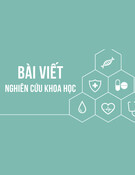
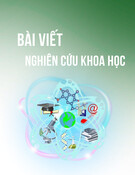


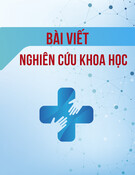


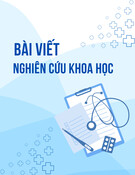
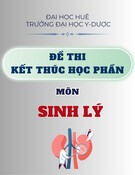

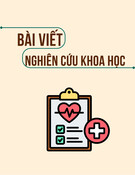
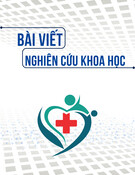

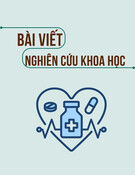
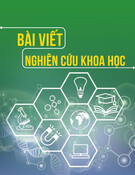
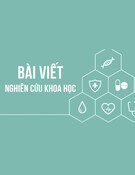
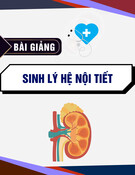


![Bài giảng Cập nhật vấn đề hồi sức bệnh tay chân miệng nặng [mới nhất]](https://cdn.tailieu.vn/images/document/thumbnail/2025/20250920/hmn03091998@gmail.com/135x160/23301758514697.jpg)



